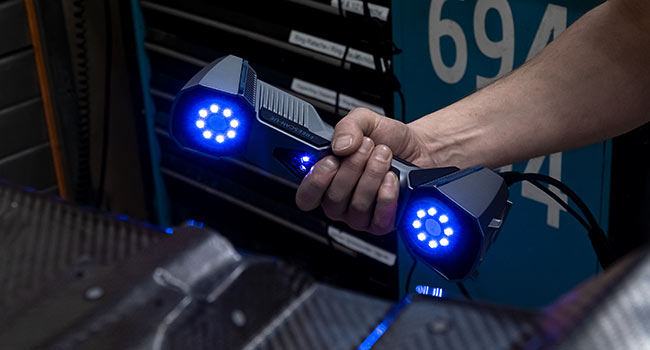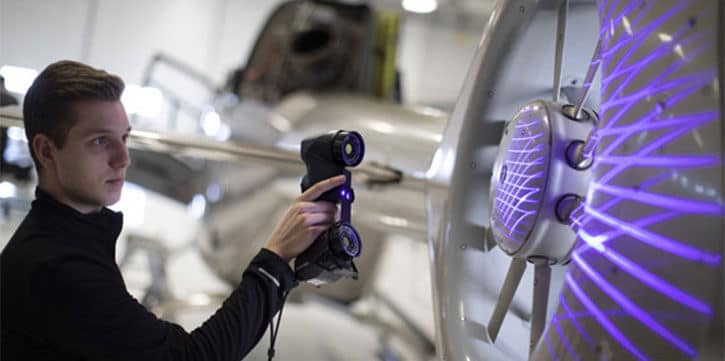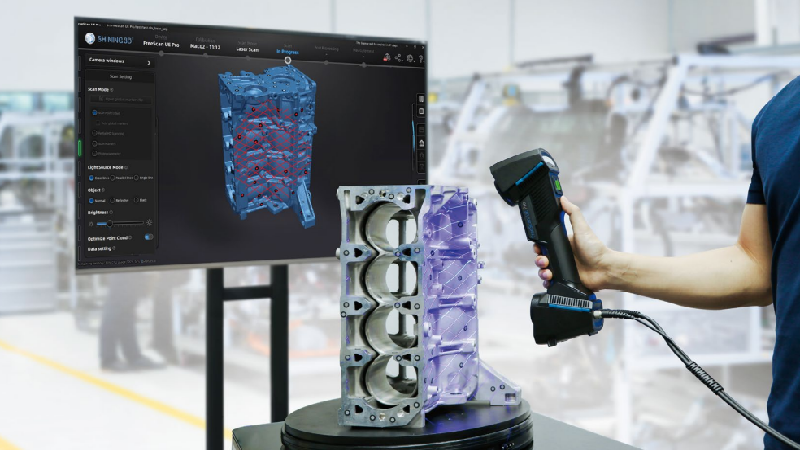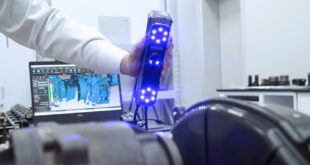Metrology 3D scanners are sophisticated devices designed to capture high-resolution 3D data from physical objects. These tools are indispensable in industries where precision is paramount, such as aerospace, manufacturing, and automotive sectors.
Types of Metrology 3D Scanners

Laser Scanners
These scanners use laser technology to map the surface of objects by measuring the time it takes for the laser to bounce back to the sensor. They are renowned for their precision and ability to capture fine details.
Structured Light Scanners
Structured light scanners project patterns of light onto an object and measure deformations in the pattern to create 3D images. This technology is particularly useful for capturing the geometry of complex surfaces.
Applications of Metrology 3D Scanners
In Manufacturing
In manufacturing, these scanners are used for inspecting and verifying product dimensions to ensure they meet design specifications.
In Quality Control
Quality control relies heavily on metrology 3D scanners to maintain standards and verify that assembly parts fit correctly and function as intended.
In Reverse Engineering
Reverse engineering processes often utilize these scanners to create digital models of existing physical objects, facilitating product improvements and innovations.
Advantages of Metrology 3D Scanners

Accuracy and Precision
The primary advantage of metrology 3D scanners is their ability to provide exact measurements, which is crucial for producing high-quality, reliable products.
Speed and Efficiency
These scanners significantly reduce the time required for data collection and analysis, speeding up both product development and quality assurance processes.
Non-Contact Measurement
The non-contact nature of these scanners allows for the measurement of delicate or soft materials without risk of damage.
Challenges and Considerations
Cost Concerns
Despite their many benefits, metrology 3D scanners can be a significant investment, especially for small businesses or startups.
Skill Requirements
Operating these scanners and processing their data requires specialized knowledge and skills, which can necessitate additional training.
Environmental Factors
External conditions, such as lighting and temperature, can influence the accuracy of measurements, posing challenges in certain environments.
Future Trends

The future of metrology 3D scanning looks promising, with advancements likely to include enhanced automation features, integration with artificial intelligence, and increased accessibility.
Conclusion
Metrology 3D scanners represent a transformative technology in precision measurement, offering substantial benefits across various industries. As technology evolves, these tools are set to become even more integral to industrial processes.
FAQs:
What is the cost of a metrology 3D scanner?
Costs vary widely, from a few thousand dollars for basic models to over a hundred thousand dollars for high-end systems.
How accurate are metrology 3D scanners?
Metrology 3D scanners are highly accurate, with precision ranging from a few micrometers to less than a millimeter.
Can these scanners be used on any material?
Metrology 3D scanners can be used on a wide range of materials, but some may require special preparation for accurate scanning.
What training is required to operate a metrology 3D scanner?
Training requirements vary based on scanner complexity, but basic technical knowledge and manufacturer-provided training are typically needed.
How do environmental factors affect 3D scanning?
Environmental factors like lighting, temperature, and airborne particles can impact scanning accuracy and may require controlled conditions for optimal results.
Are metrology 3D scanners suitable for small-scale businesses?
Yes, metrology 3D scanners can be beneficial for small-scale businesses, but it’s essential to consider factors such as cost, training, and the specific needs of the business before investing in one.
Can metrology 3D scanners be used outdoors?
While some metrology 3D scanners may be suitable for outdoor use, environmental factors such as lighting and temperature variations can affect their accuracy. Specialized outdoor scanning equipment may be required for reliable results in such conditions.
How does the resolution of a metrology 3D scanner affect its performance?
The resolution of a metrology 3D scanner refers to its ability to capture fine details. Higher resolution scanners can capture more detailed information but may require longer scanning times and produce larger data files. The appropriate resolution depends on the specific application and desired level of detail.
Are metrology 3D scanners compatible with CAD software?
Yes, many metrology 3D scanners are compatible with CAD (Computer-Aided Design) software, allowing users to directly import scanned data into CAD programs for further analysis, modification, or integration into digital designs.
What maintenance is required for metrology 3D scanners?
Metrology 3D scanners typically require regular calibration to maintain their accuracy and performance. Additionally, keeping the scanner clean and free from dust or debris is essential for optimal results. Manufacturer recommendations for maintenance should be followed to ensure the longevity and reliability of the equipment.
 Data Science in Digital Marketing Data Science in Digital Marketing: Mechanism Examples, Benefits Data Science Meets Digital Marketing Magic
Data Science in Digital Marketing Data Science in Digital Marketing: Mechanism Examples, Benefits Data Science Meets Digital Marketing Magic
